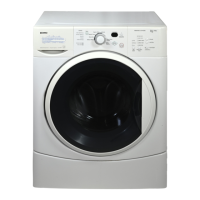13
Follow the fabric care label instruc-
tions on items to be washed.
For best results
Safe Stain Removal Procedures
To reduce the risk of fi re or serious injury to persons or prop-
erty, comply with the basic warnings listed below:
Read and comply with all instructions on stain removal •
products.
Keep stain removal products in their original labeled con-•
tainers and out of children’s reach.
Thoroughly wash any utensils used.•
Do not combine stain removal products, especially am-•
monia and chlorine bleach. Dangerous fumes can result.
Never wash items which have been previously cleaned in, •
washed in, soaked in or spotted with gasoline, dry clean-
ing solvents or other fl ammable or explosive substances
because they give off vapors that could ignite or explode.
Never use highly fl ammable solvents, such as gasoline, •
inside the home. Vapors can explode on contact with
fl ames or sparks.
For Successful Stain Removal:
Remove stains promptly.•
Determine the kind of stain, then follow the recommend-•
ed treatment in the stain removal chart on the next page.
To pretreat stains, use a prewash product, liquid deter-•
gent, or a paste made from powder detergent and water.
Use cold water on unknown stains because hot water •
can set stains.
Consult care label instructions for treatments to avoid on •
specifi c fabrics.
Check for colorfastness by testing stain remover products •
on an inside seam.
Rinse and wash items after stain removal.•
- HARMFUL VAPOR HAZARD - Do not use
or mix liquid chlorine bleach with other household chemi-
cals such as toilet cleaners, rust removers, acid or products
containing ammonia. These mixtures can produce dangerous
fumes which can cause serious injury or death.

